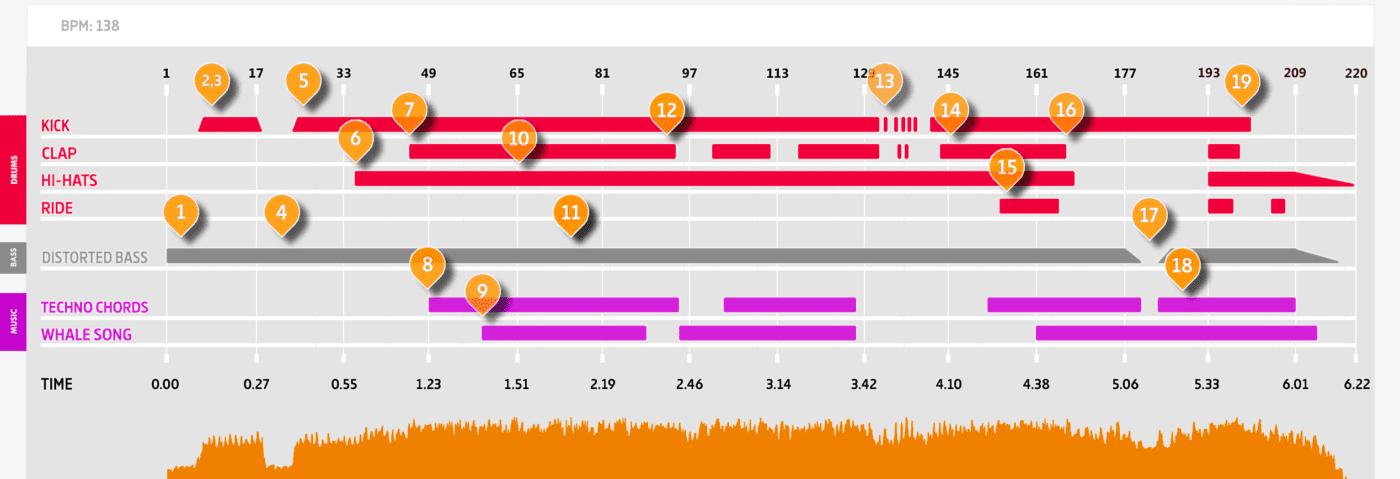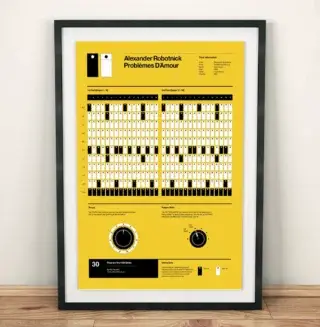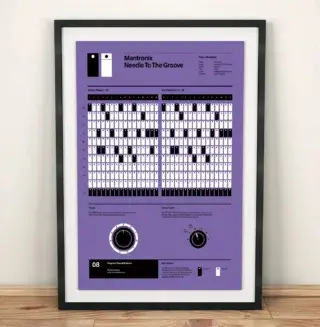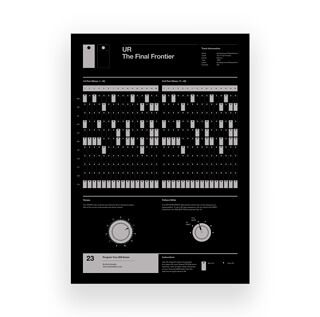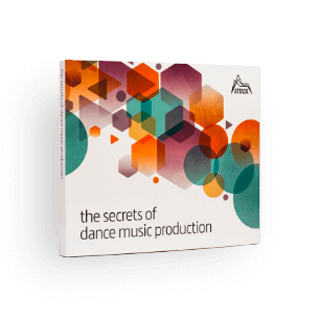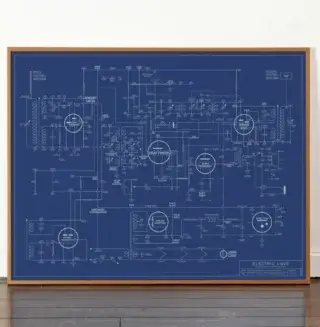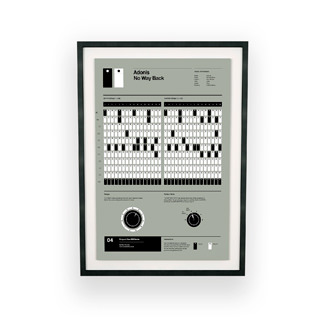This time in Deconstructed, we dive deep into Drexciya’s ‘Black Sea’ to discover the intricacies of the arrangement of this classic slab of Detroit techno.
Drexciya. The mighty Drexciya. Although the Detroit duo’s output ended with the tragic passing of co-founder James Stinson in 2002, they have only become more legendary with each passing year. From growing interest in their Afrofuturist mythos – that of pregnant slaves being thrown overboard during the Atlantic passage and their children evolving to live and breathe underwater – to a building reverence for their uncompromising music, Drexciya continue to inspire and teach us almost 20 years on from their dissolution.
In Deconstructed, we look at the arrangement of songs: how they are laid out, how they build tension and release, and how they often thwart our expectations. This time, we’ve got Stinson and Gerald Donald’s ‘Black Sea’ on the docket. Originally released in 1995 on Warp Records as part of The Journey Home EP and later re-released on Journey Of The Deep Sea Dweller IV on Clone, it’s a tough hunk of Detroit techno with a decidedly live feel. Although it’s fairly minimal, it never feels like it. In fact, it’s almost maximalist in its energy. How do the two manage this? Let’s get into it and find out.
The Track
The Arrangement
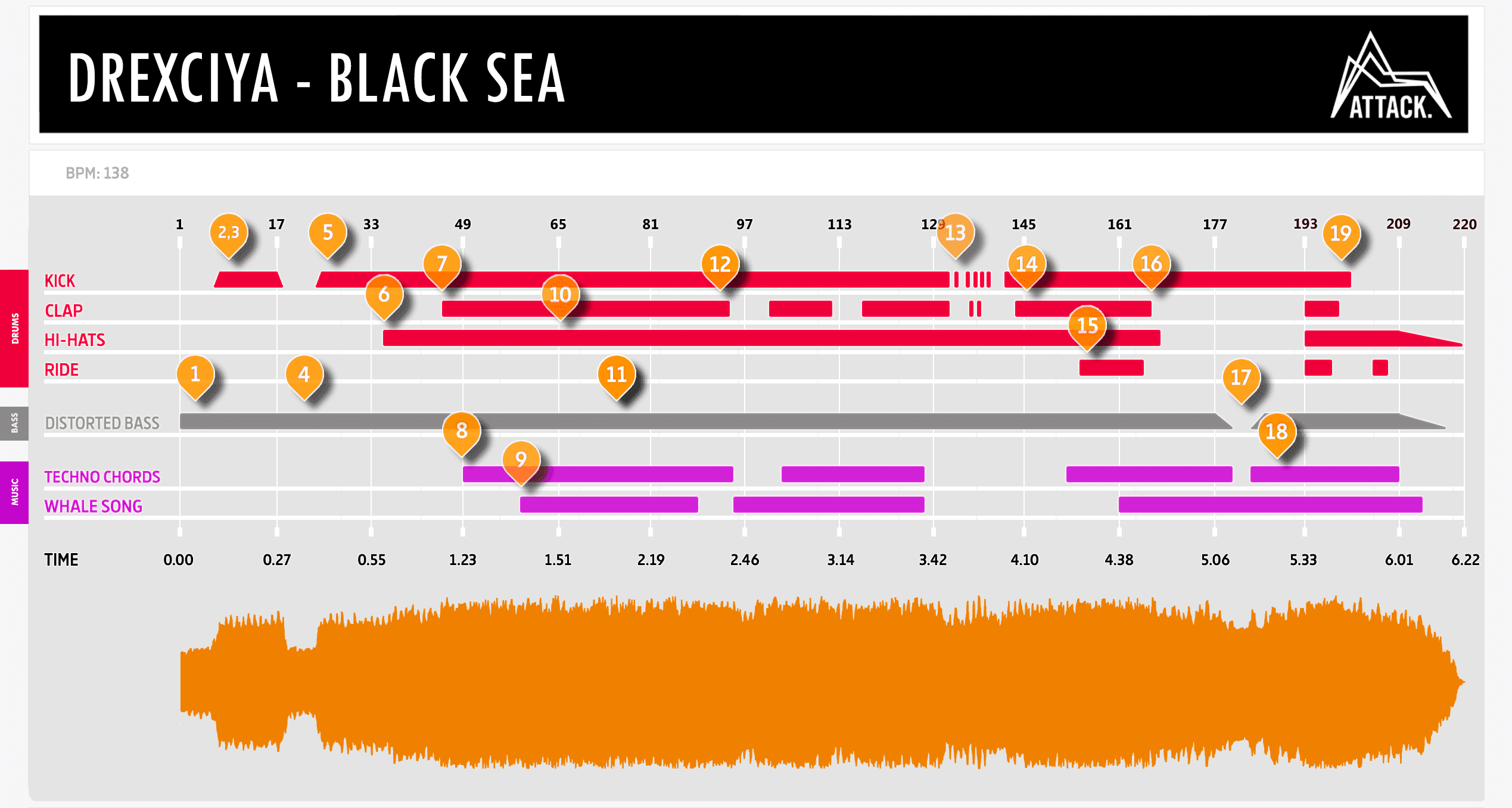
What’s Happening
1
In the early and mid-‘90s, it was rare to find a computer in the music studio. Sequencing was often done with a hardware sequencer. And while it was possible to meticulously lay out each note and record a song with the sequencer doing its thing, it was just as common to perform the song live to tape (usually DAT). This was Drexciya’s preferred method. Their tracks have a live feel. Notes don’t hit directly on the beat and changeovers happen loosely rather than adhering to counts of four or eight. This brings a type of energy that’s very different from a song that’s been carefully planned. ‘Black Sea’ has this live feel. Let’s see what we can learn from it.
The song begins with an isolated bassline. It’s distorted with a slight delay on it and feels like it was programmed with a step sequencer. Because there are no percussive elements yet it’s hard to tell where the one is, where each bar should start. If you assume that it lines up with the first note of the bassline on the record, you’ll be in for a surprise.
2
Surprise. The kick appears at the beginning of the sixth bar. There are a lot of unexpecteds happening here so let’s take a look at each in turn.
First, the kick starts at the sixth bar. Most dance songs are arranged predictably, with changeovers happening in multiples of four. This makes it easy for the DJ to mix, for one, but it also provides a mental roadmap for listeners and club-goers. Drexciya has no intention of pandering to you, however. They are fully in control. You’re just along for the ride.
Second, the kick fades in. Wait, what? When was the last time you heard a kick fade into a song? Drexciya are using a Roland TR-909 in ‘Black Sea’ and they play it like an instrument, tweaking the knobs live as they go. This is just the first instance of this.
And third, we are now realizing that the one of the song does not line up with the beginning of the record. As the kick establishes the one, we have to do some mental gymnastics to reorient ourselves as to where we are in the song. DJs, take note: don’t try to mix from the start of the record. Find this kick first or you’ll end up with shoes in the dryer.
3
Now that we have a steady kick, we can determine that this is a 138bpm track. When the kick reaches its full volume, it distorts. It’s being run hot into the mixer, a common production trick in ‘90s techno.
It’s also worth noting that the kick is hitting in a four to the floor pattern and not the usual electro-style broken beat. Drexciya may have been leaders of the Detroit electro sound but they were just as capable with 909 techno as 808 electro.
4
After 12 and a half bars, the kick abruptly fades out, leaving the bassline to keep rolling. Drexciya are clearly working off of intuition here. They aren’t counting bars (and they certainly aren’t watching blocks on a computer screen). They’re feeling the music and reacting according to what seems right at the time. To the listener, especially one used to cut and paste song arrangement, it might be unexpected but it never seems wrong.
5
Somewhere just past the start of bar 23, Drexciya fade the kick back in. Surprising, yes, but get used to it, as these guys are just not going to play by the rules
6
At about bar 34, the filter on the bassline starts to open up, signalling that it’s time for the energy to increase. Accordingly, they bring in the hi-hats on the 909 and let them roll. The closed hats are in straight 16th notes, with open hats striking at the end of each pattern.
It’s worth noting the makeup of the knobs in the hi-hat section on a TR-909, as this will help us understand how Drexciya are manipulating things. There’s a single volume knob for the hi-hat section, which includes both closed and open hats. Each hat type has its own decay knob so the duo can play around with the lengths of the hats independent from each other. They’ll do this throughout the song, using the decay knobs to add excitement and energy at key points.
The overall drum pattern doesn’t ever seem to change either. Elements are instead brought in and out by hand using the volume knobs.
7
At bar 45, Drexciya introduce the next song element: distorted claps. They’re providing a standard backbeat, dropping on the two and four of each bar. Yes, the claps are on two and four. You probably thought the clap was on the one and three at first. Reorient yourself again, please.
Have you noticed that the claps are only the fourth element in the song, after the bassline, kick, and hats? And yet ‘Black Sea’ doesn’t feel lacking at all. Part of this is the fullness of the bassline. With its 16th notes and almost percussive-like short attack, it does a lot to fill out the song. But the unpredictable arrangement is also keeping us engaged. We aren’t waiting for the next element to be introduced every 16 bars. We have no idea what is going to happen next.
8
The song is ostensibly in the key of A minor. Minor keys can feel sad or moody, and this is a hallmark of Drexciya’s tunes. We say “ostensibly” though because bar 49 sees the arrival of some techno chords that don’t strictly adhere to one key. These are parallel chords. Because they’ve been sampled rather than played, each chord shares the same voicing as the other. Although ‘wrong’ from a traditional music theory point of view, they can be emotionally powerful. Yet another example of Drexciya in complete control.
The chords are quite clean-sounding, making a nice contrast to the distorted bassline and drum machine. They’re also panned to the right to give them some space in the mix.
The bassline has not been static this whole time, however. It has continued to twist and turn, the filter opening and closing to create interest and keep things moving.
9
At bar 60 we get the penultimate new element of the song, or what can only be described as whale song. Sure, it’s a filter in resonant self-oscillation but given that it’s Drexciya, calling it whale song seems more appropriate.
This continues throughout the track, with the notes occasionally changing. The timing is also imperfect, leading us to believe this was played live rather than triggered by a sequencer.
10
Check out bar 65. We can hear the changing of the hi-hat decay in action, as it shortens abruptly. The fact that both closed and open hats change at the same time is likely due to Drexciya adjusting them simultaneously, two-handedly.
11
The song has been chugging along nicely, with the whale song and chords offering an emotional counterpoint to the bassline. While there are not many large-scale changes, Drexciya continue to tweak the bassline and hi-hat decay, the latter alternating between closed and open hat changes.
12
At bar 95, the claps drop out. The hi-hat decay is truncated and then the chords take a breather. The hats come back after six bars and the chords return at bar 103, after the hi-hats have lengthened again.
13
With such few elements, it’s about small changes to keep things interesting. The bass filter cutoff closes up at bar 109, accompanied by a reduction in hi-hat length. Soon after, the claps take a break. The whales seem to have submerged, for the time being, their song absent during this section. It and the claps soon return though.
Although they’re performing the song live, this is not a formless jam. Despite the song’s eccentricities there are still beats to hit, like a breakdown. At bar 131 the kick and clap disappear, followed by the chords two bars later. The bass and hats roll along, punctuated occasionally by single kicks and claps.
There’s no big snare roll, no peaking filter cutoff, just the steady bass and hi-hats.
14
When the kicks come back at bar 142, the impact of the heavy bass is that much more powerful. The claps return two bars later. This is truly a masterclass in how to do a lot with very little.
15
Not long after the chords and whale song return at bar 152, we get the final element of the song: 909 rides. Much like the other percussion, Drexciya tweak it live, using the volume knob to bring it in and snatch it away abruptly. They also play with the pitch, creating an unstable, queasy vibe.
16
We’re nearing the end of the song now. The hats and clap drop out at bars 167 and 168, respectively, allowing the bassline, whale song, and chords to play on. The chords themselves begin to change up, sometimes repeating the same chords, sometimes pausing.
17
Here the bassline fades out and the chords stop, letting the kick run on its own for a few bars. A lone whale song note appears.
18
As the bass comes back in, the chords drop in pitch. The digital aliasing in the sample is audible here, as it’s been slowed down. This adds to the mood and atmosphere of the song. The bassline builds back up and the percussive elements – ride, clap, and hi-hats – are reintroduced. The chords return to their original pitch but now plays in a slightly different order.
19
The kick gives up the ghost at bar 201 (with the claps expiring just before that), the rides sound their last, and the hi-hats and bassline continue through a fadeout.
